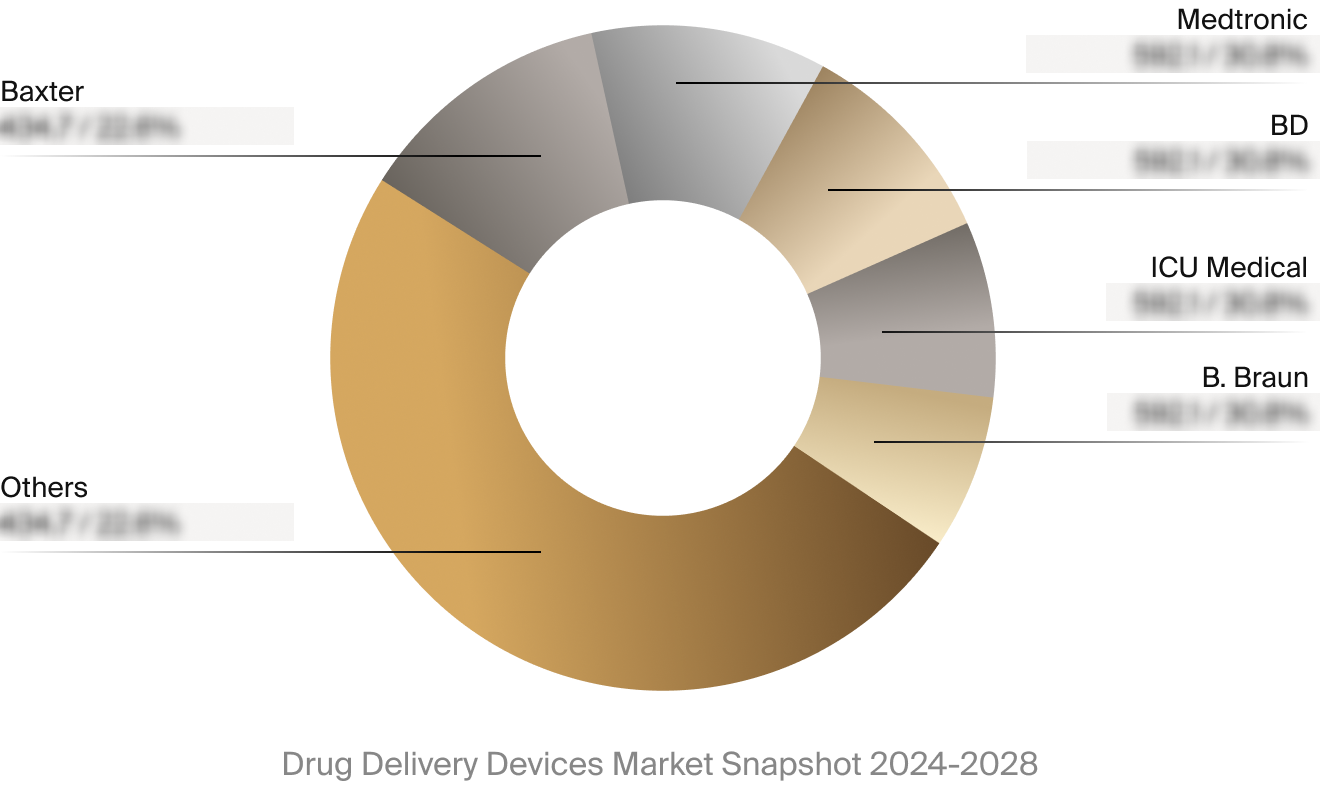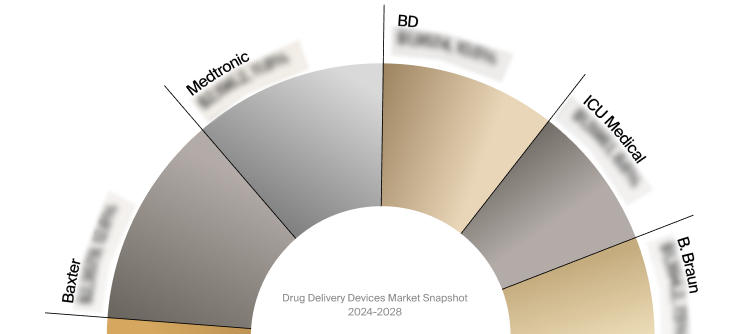Overview
Valued at ~$18.7 billion in 2023, the drug delivery devices market is projected to reach
~$24.6 billion by 2028, increasing at a CAGR of 5.7% over the 2023-2028
forecast period. This Market Snapshot is part of LSI’s Market Intelligence platform, your
one-stop-shop for global medtech market sizing and analysis, procedure volume data, startup company- and
deal-tracking, curated insights, and more.
Drug delivery devices are used ubiquitously throughout the healthcare system. They are utilized in various
settings, from hospitals administering drugs and fluids in hospitalized patients to delivering medications to
individuals with chronic conditions in nursing homes.
Products included within the scope of this analysis include:
Injection devices (e.g., syringes, pens, jet injectors)
Infusion pumps & sets
Gravity administration sets
Vascular access catheters (e.g., central & midline catheters)
Enteral solutions (i.e., drug delivery into the stomach)
External insulin pumps, including tethered and patch insulin pumps and sets
*Note: This analysis specifically excludes orally administered agents, depot and transdermal drugs, and
implantable pain pumps.
This Market Snapshot is intended to provide a high-level overview of the global market for drug delivery
devices, with key insights into:
Unit volumes from 2023 to 2028
Market forecasts from 2023 to 2028
Market insights
Competitive landscape analysis of major competitors
Insights into key market events for strategic and startups
Drug Delivery Devices Market Snapshot Summary
| Snapshot Aspect | Data and Details |
| Base Year for Estimate | 2023 |
| Forecast Period | 2023 - 2028 |
| Market Size in 2023 | $18.7 billion |
| CAGR | 5.7% |
| Projected Market Size in 2028 | $24.6 billion |
Drug Delivery Devices Market Insights
The drug delivery devices market is experiencing growth due to increased drug delivery procedure volumes
combined with increases in price at slightly less than the rate of medical device price inflation. Growth in
drug delivery device utilization is largely driven by the adoption of newer biological drugs that necessitate
intravenous administration over oral routes. Additionally, there has been increased adoption of newer,
higher-priced smart pumps that help reduce medication errors and automate drug administration documentation,
resulting in higher dollar volume sales.
Leading suppliers, such as Medtronic, Baxter, and BD, collectively represented about 48% of the market share in
2023. Notably, ICU Medical increased its share from 5% in 2020 to 8.6% by acquiring Smith Medical's drug
delivery business.
Despite the market’s growth potential, it faces changes—particularly regarding regulatory oversight and
technological reliability. Many smart infusion systems have encountered recalls due to issues such as improper
medication administration and cybersecurity vulnerabilities. The market remains fragmented, with no single
company holding more than 20% market share, creating opportunities for smaller players to introduce innovative
technologies.
Competitive Landscape
The full Market Snapshot includes a robust analysis of the competitive landscape for the drug delivery devices
market. This includes estimated market revenue and market share for key players, such as Medtronic, Baxter, and
BD.

Select Market Events
| Company | Date | Event Type | Event |
|
BD
|
9/2024 | M&A | BD acquired Critical Care from Edwards Lifesciences. |
|
Baxter
|
4/2024 | Regulatory | Baxter received FDA 510(k) clearance for its Novum IQ™ large volume infusion pump (LVP) with Dose IQ™ Safety Software. |
Key Companies Covered
Ace Medical
Ambu
Avanos
Avid Medical
Baxter
B. Braun
BD
Cane
ICU Medical
Infutronix
Iradimed
Laborie Medical
Medtronic
MicroPort Scientific
Moog
Nouvag
Stradis
Teleflex
Walkmed
Zyno Medical





































































